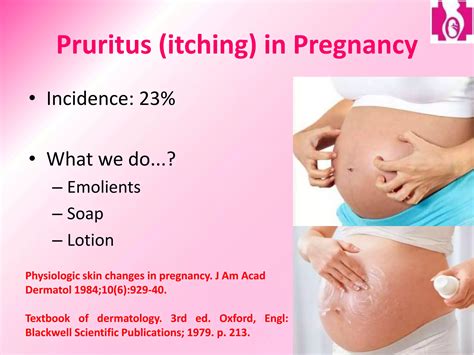Intro
Cholestasis of pregnancy, also known as obstetric cholestasis, is a liver condition that occurs in some pregnant women. It is characterized by a reduction in the flow of bile from the liver, which can cause a range of symptoms and potentially serious complications for both the mother and the baby. In this article, we will delve into the world of cholestasis of pregnancy, exploring its symptoms, risks, diagnosis, and treatment options.
Understanding Cholestasis of Pregnancy
Cholestasis of pregnancy is a condition that affects the liver's ability to transport bile, a digestive fluid produced by the liver that helps to break down fats and absorb fat-soluble vitamins. During pregnancy, the liver's function can be impaired, leading to a buildup of bile in the liver and a decrease in its flow into the intestine. This can cause a range of symptoms, including itching, jaundice, and liver damage.

Symptoms of Cholestasis of Pregnancy
The symptoms of cholestasis of pregnancy can vary from woman to woman, but the most common symptoms include:
- Intense itching: This is the most common symptom of cholestasis of pregnancy, and it can be severe enough to disrupt daily activities and sleep.
- Jaundice: Some women may experience jaundice, a yellowing of the skin and eyes, due to the buildup of bile in the liver.
- Dark urine: The urine may become darker than usual due to the increased levels of bile in the blood.
- Pale stools: The stools may become pale or clay-colored due to the lack of bile in the intestine.
- Fatigue: Women with cholestasis of pregnancy may experience fatigue, which can be debilitating.
Risks Associated with Cholestasis of Pregnancy
Cholestasis of pregnancy can pose risks to both the mother and the baby. Some of the potential complications include:
- Preterm birth: Women with cholestasis of pregnancy are at increased risk of preterm birth, which can lead to health problems for the baby.
- Fetal distress: The baby may experience distress due to the lack of oxygen and nutrients, which can lead to complications during delivery.
- Meconium staining: The baby's first stool, called meconium, may be stained with bile, which can indicate fetal distress.
- Liver damage: Untreated cholestasis of pregnancy can lead to liver damage and scarring.
Diagnosing Cholestasis of Pregnancy
Diagnosing cholestasis of pregnancy typically involves a combination of physical examination, medical history, and laboratory tests. The following tests may be used to diagnose the condition:
- Blood tests: Blood tests can measure the levels of bile acids and liver enzymes in the blood.
- Imaging tests: Imaging tests, such as ultrasound or CT scans, may be used to visualize the liver and bile ducts.
- Liver biopsy: In some cases, a liver biopsy may be performed to confirm the diagnosis.

Treatment Options for Cholestasis of Pregnancy
Treatment for cholestasis of pregnancy typically focuses on managing the symptoms and reducing the risk of complications. The following treatment options may be used:
- Ursodeoxycholic acid (UDCA): UDCA is a medication that can help to reduce the levels of bile acids in the blood and alleviate symptoms.
- Vitamin K supplements: Vitamin K supplements may be prescribed to prevent bleeding complications.
- Fetal monitoring: Regular fetal monitoring may be necessary to monitor the baby's well-being and detect any potential complications.
- Induction of labor: In some cases, induction of labor may be necessary to reduce the risk of complications.
Managing Symptoms and Reducing Risks
While there is no cure for cholestasis of pregnancy, there are steps that women can take to manage their symptoms and reduce their risk of complications. These include:
- Staying hydrated: Drinking plenty of water can help to thin out the bile and reduce the risk of complications.
- Avoiding fatty foods: Avoiding fatty foods can help to reduce the load on the liver and alleviate symptoms.
- Getting plenty of rest: Getting plenty of rest can help to reduce fatigue and alleviate symptoms.
- Seeking medical attention: Women who experience symptoms of cholestasis of pregnancy should seek medical attention promptly to reduce the risk of complications.

Conclusion
Cholestasis of pregnancy is a serious condition that requires prompt medical attention. By recognizing the symptoms and risks associated with the condition, women can take steps to manage their symptoms and reduce their risk of complications. While there is no cure for cholestasis of pregnancy, treatment options are available to alleviate symptoms and reduce the risk of complications.
Frequently Asked Questions
What is cholestasis of pregnancy?
+Cholestasis of pregnancy is a liver condition that occurs in some pregnant women, characterized by a reduction in the flow of bile from the liver.
What are the symptoms of cholestasis of pregnancy?
+The symptoms of cholestasis of pregnancy include intense itching, jaundice, dark urine, pale stools, and fatigue.
How is cholestasis of pregnancy diagnosed?
+Diagnosing cholestasis of pregnancy typically involves a combination of physical examination, medical history, and laboratory tests, including blood tests and imaging tests.
We hope this article has provided you with a comprehensive understanding of cholestasis of pregnancy. If you have any further questions or concerns, please don't hesitate to reach out to your healthcare provider.
